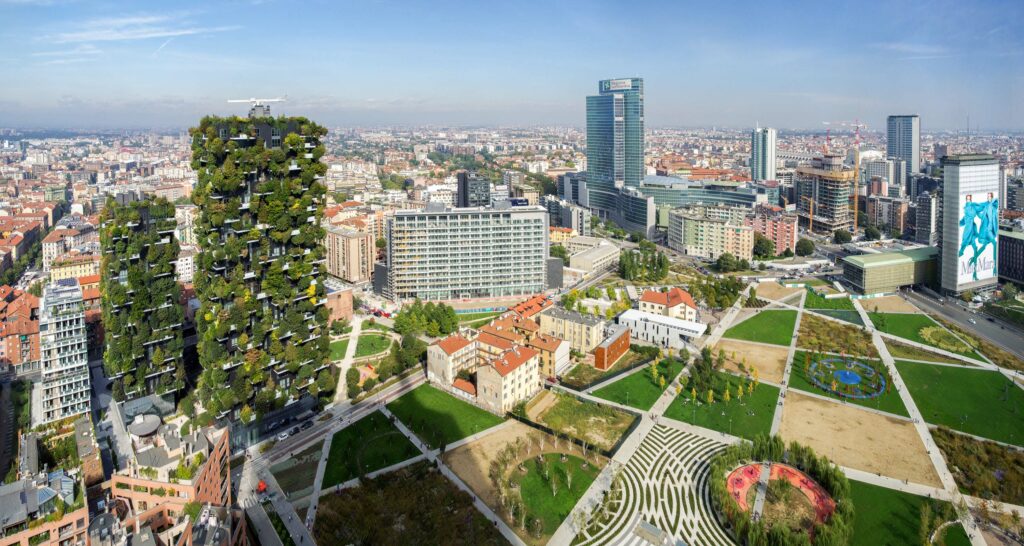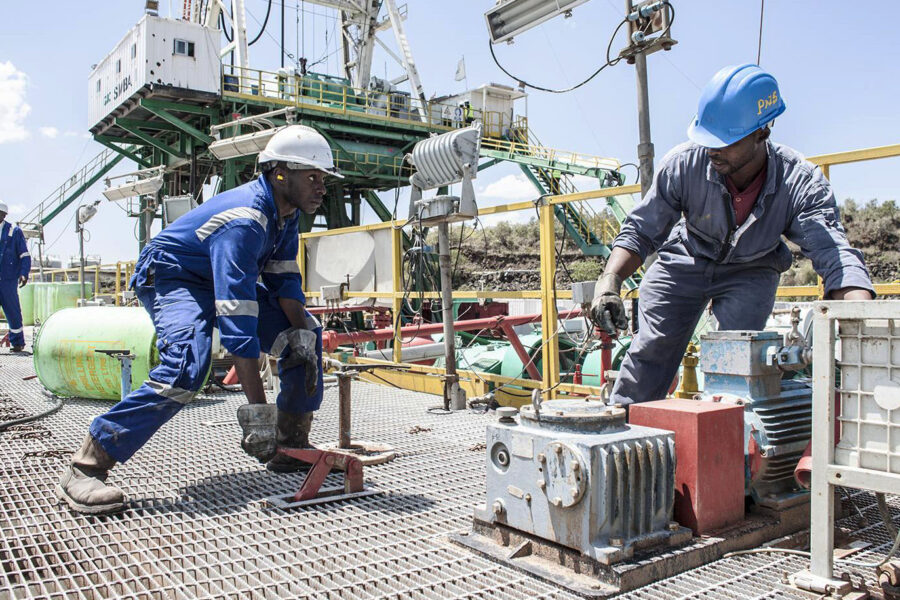The SDGs are the only road to recovery
The Sustainable Development Goals provide the only possible path to lead us from current crises to a future of long-term survival for our planet and inhabitants
Climate — Europe, Global

We currently face three simultaneous global ‘tsunamis’: the COVID-19 pandemic, the economic crisis that derives from the pandemic, and the mother of all crises, the climate crisis. To respond to the health crisis, we take social distancing measures. Biomedical research, meanwhile, has enabled the production of relevant vaccines, which provide hope for containing the pandemic.
To respond to the economic crisis, both short and medium-term measures have been employed. Short-term measures try to avoid the pandemic turning into a major economic and financial disaster that will long outlast the health crisis. Currently, these measures include ensuring that:
- The workforce remains employed even if quarantined.
- Public and private institutions have the financial support to help vulnerable citizen groups.
- Small and medium-sized enterprises are safeguarded against bankruptcy.
- Policies are enacted to support the financial system as non-performing loans mount.
Medium and long-term responses focus on developing fiscal packages that will finance the recovery, comparable to the crisis-related loss of gross domestic product (GDP). These fiscal packages will have to be financed by national debt. As such, they will be paid for by future generations.
The current generation therefore has a moral responsibility to ‘build forward better’ in a way that considers the prosperity of future generations. That means restarting our socio-economic systems and their interaction with natural ecosystems in a sustainable way. One major challenge for a sustainable recovery is the urgency of tackling the climate crisis, to limit global warming to 1.5°C, beyond which the risk of extreme weather events and poverty for hundreds of millions of people will significantly increase.
Currently, there is no country in the world that is not experiencing the drastic effects of climate change. The annual average economic losses from climate-related disasters are in the hundreds of billions of dollars. Between 1998 and 2017, 1.3 million people were killed and 4.4 billion injured by climate-related events. As indicated in the UNEP Emissions Gap Report 2020, current nationally determined contributions (NDCs) for climate change mitigation are inadequate to achieve the Paris goals, and would lead to a temperature increase of at least 3°C by the end of the century. The net-zero emissions goals recently announced in Europe, China, and other major economies could reduce this increase by about 0.5°C.
The tools to enact change
The main question we need to answer is: how can countries recover in a way that simultaneously responds to this unprecedented triple crisis? The answer is that the relevant blueprint already exists. It consists of the Sustainable Development Goals (SDGs) and the Paris Agreement on climate change. Both these frameworks call for deep transformations in every country, requiring complementary actions by governments, civil society, science, and business.
An excellent framework for realizing the 17 SDGs is the Six Transformations introduced by UN SDSN, which provide modular building blocks of SDG achievement. The Six Transformations are:
- education, gender, and inequality
- health, well-being, and demography
- energy decarbonisation and sustainable industry
- sustainable food, land, water, oceans
- sustainable cities and communities
- digital revolution for sustainable development
Each transformation respects the strong interdependencies across the 17 SDGs. The transformations identify priority investments and regulatory challenges, calling for actions by well-defined parts of government, business, and civil society.
Indeed, beyond the fiscal stimuli that are expected to boost aggregate demand, this crisis calls for transformative public investments. These must shape a sustainable, resilient, job-based, socially inclusive, green, and digital transition, and must also leverage private-sector investment. The message that we must get across to all relevant stakeholders, politicians, policymakers, businesses, financial institutions, and civil society is that, in addition to the moral case, there is an economic case for a sustainable and resilient recovery. Various simulations of the effect of green recovery plans worldwide confirm that a green economic stimulus is more growth-enhancing than a ‘return-to-normal’ stimulus. The latter would merely boost current, unsustainable consumption and production patterns.
In the 2021 statement of the Lancet COVID-19 Commission Task Force on Green Recovery, we argue that the following policy-financial-technology interactions will provide the required impetus to transform the recovery into a green and digital future:
- Recent political commitments to achieve climate neutrality by around mid-century in Europe, China and other major economies.
- Strategies based on environmental, social, and corporate governance (ESG) and investing in sustainability now account for over one third of global assets under management and are likely to be the majority of global assets in the coming years, which changes the direction of global capital flows.
- Renewable energy sources, circular economy production and consumption practices, and nature-based solutions, offering significant financial private and public benefits, major reductions in greenhouse gas emissions footprint, coupled with numerous health and social benefits.
European Green Deal
The European Green Deal (EGD) is an interesting case study for an SDG-based transformative transition, as it provides the right level of ambition and direction for the long-run vision of the joint implementation of the SDGs and the Paris Agreement. UN SDSN has showcased work around the recovery in Europe in a recent report. The main message from the report is that the SDGs, the EGD and the NextGenerationEU recovery instrument (worth €750 billion, in addition to European Multiannual Financial Framework, and focused on a green, digital, inclusive recovery) are consistent policies, with the same targets and content.
The SDSN report also discusses the actual transformation pathways that can mobilize the European transformation and are also relevant for the global sustainable recovery. In the report we argue that the EGD and the European Recovery and Resilience Facility (the main part of NextGenerationEU) should be conceived with a systems approach. This means simultaneously addressing multiple objectives and promoting policy instruments and technological solutions that can be used across the various sectors of the economy. Within this systems approach, it is important to consider the many complementarities for managing the complexity of the energy system:
- variable renewable energy sources
- zero-carbon technologies
- public and private investments
- natural and engineered systems
- mitigation and adaptation
- centralized and decentralized solutions
- actions and strategies
- research and development activities promoted by research institutions and academia and funded by the private or public sector
Moreover, EU countries should have detailed plans exploring all options for decarbonizing their economies, and the associated costs. These should be reflected in their national energy and climate plans, and their Paris Agreement NDCs. EU countries need broad policy frameworks that contain:
- clear goals
- technology roadmaps
- regulatory assignments to stakeholders
- strong systems of deliberation
- strategies to raise public awareness
- mechanisms for reporting on outcomes
- a holistic approach
- a focus on energy efficiency and energy saving on the demand side, limiting worldwide energy demand without compromising economic development and energy access
Since the 1980s, governments in Europe were asked to intervene only for the purpose of fixing market failures. Now governments are asked to make significant long-term investments to support rapid recovery from the coronavirus shock. Businesses do not invest unless they see an opportunity for growth, so turning mitigation into opportunities for investment and innovation is key.
Sustainable innovation requires patient, long-term, strategic finance. This demands a significant entrepreneurial role for the state to provide the required patience. At the macro level, Europe needs to re-conceptualize financial stability and the ‘mission’ of central banks to include climate and environmental degradation risks. The European Investment Bank (EIB) and the European Investment Fund have the expertise and scale to set the direction in deploying equity-type financial instruments complementary to loans and guarantees. At the meso level, national public investment organizations provide positive sources of long-term patient finance, which support sustainable investing. At the micro level, companies need to understand that those which switch towards sustainable or green practices soonest will be the most competitive, most innovative, and most successful over time.
An important mobilizer for the European sustainability transition is the EU taxonomy, launched in 2019. This is a classification system that defines sustainable economic activities, and as such creates a common language for investors and lenders. The EU taxonomy can scale up private and public investments to finance the transition to a climate-neutral and green economy. The challenge is to connect the taxonomy with financial instruments (green or transition bonds, green loans, and so on) and business reporting. Currently, corporate leaders and investors deal with two separate and disconnected business reporting systems: one for financial results and the other for ESG performance. What are needed are hybrid metrics, allowing companies to report both their financial profits and their footprint on the environment and the society. Such metrics will enable a new frontier for sustainable valuation.
Another crucial dimension of the sustainability transition, explicitly addressed by both the SDGs and the EGD, is the importance of a just and inclusive transition. For this, job creation multipliers are crucial. Investments in line with the EGD can lead to approximately one million new jobs in energy and energy-related sectors in Europe by 2030. Most new jobs created in Europe will be in highly skilled positions, requiring substantial training. A third of new jobs will require moderate retraining (transitioning workers within the same industry or occupation). Very few opportunities in Europe, however, will be for low-skilled jobs. Moreover, the distributional effects of key EU climate policies should be considered. Measures to limit the regressive effects of combined mitigation policy options should ensure more equality, increase GDP and employment, and have a progressive effect in all EU regions.
The energy transition must be inclusive and fair for all people in Europe, while EGD and recovery and resilience plans should be oriented to reduce income inequalities. Genuine stakeholder participation can ensure democratic oversight, as well as directing public funds towards the most socially desirable uses. Open-source models, transparency, and stakeholder engagement are crucial for supporting the green and digital stimulus measures enacted by governments and society. As in all crises, timing is critical. The post-pandemic fiscal stimulus is larger than anything we’ve seen before. Policymakers need guidance, and fast, to steer between health protection, economic relief, and climate resilience. The potential of sector-specific policies and reforms to green and digitize the economy could be assessed through a comprehensive list of sustainability and resilience criteria, explicitly linked with the SDGs.
A global challenge
Looking at the global picture, financial resources and commitments for a post-COVID-19 recovery are so far largely insufficient for a green recovery, including in most G20 countries. Low-income countries and some emerging markets urgently need support to address the immediate consequences of the pandemic, but also to build back in a way that is more sustainable, inclusive, and resilient. As a response, the International Monetary Fund (IMF) and World Bank, including major economies like the US, the EU, China, and other G20 countries, have signaled their support for a new $650 billion special drawing rights allocation of IMF reserves. These will ensure that governments in low and middle-income countries have the means to combat the COVID-19 pandemic and start on the path of investment-led recovery. Given that this help, together with the existing Recovery and Resilience Facility, will start being implemented around September 2021, the world’s capacity for deploying the green and digital transformative transition to sustainability will certainly be tested in the next three years.





